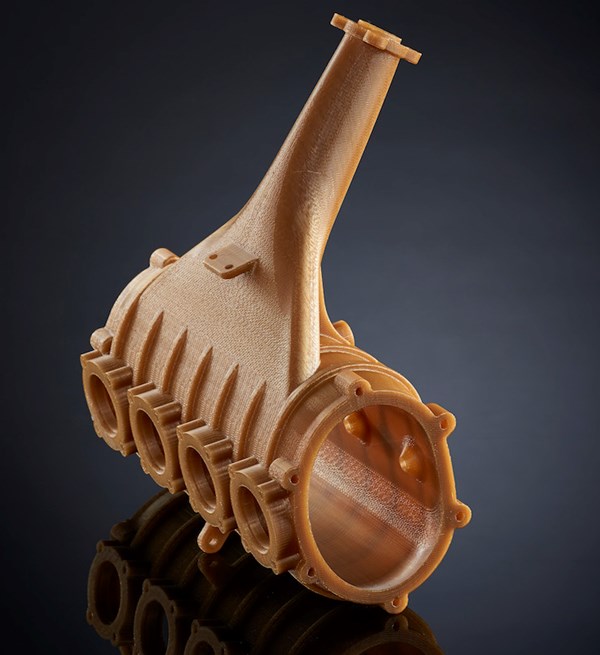3D Printing Offers Much Promise For Materials Scientists
Will the rise of 3D printing mark the dawn of a new "golden age for material scientists"?
During the 3D Printing USA Conference in Santa Clara, Calif., hosted by UK-based IDTechEx, it was proclaimed that thanks in part to 3D printing, this is the “golden age for material scientists.” This statement from John Hornick, partner of Finnegan, Henderson, Farabow, Garrett & Dunner, and intellectual property law firm that has a focus on 3D printing and additive manufacturing (AM).
He was not alone in those thoughts. Throughout the two-day 3D printing conference, much conversation centered around materials.
“We need materials optimized for additive manufacturing,” said Hemant Bheda, CEO and founder of Arevo Labs. “In absence of that, we have to take those current materials that are available and modify to make them suitable for additive manufacturing. That in combination with our process, goes hand in hand in getting the optimal performance out of material.”
Arevo Labs recently made headlines when it announced it’s offering AM service to make 3D-printed composite parts using PEEK and PAEK polymer-based formulations.
“High performance materials are required by industries such as aerospace and oil and gas,” he said. “There’s been a long dream of polymers replacing metal – and we are finally seeing the light at the end of the tunnel.”
While 3D printing is a “powerful” industry, Kenneth Church, president and CEO, of nScrypt Inc., a manufacturer of micro-dispensing and 3D printing systems, says it’s not complete as there are still both material limitations and compatibility issues. This is why diverse materials are crucial, he said.
Stratasys, which offers a range of additive manufacturing materials, gave an overview of some of its materials as well as a look into what’s on the horizon as far as R&D. The company recently announced that it now offers ULTEM 1010 high performance FDM thermoplastic for the Fortus 400mc and 450mc 3D production Systems. The material had been previously available for the Fortus 900mc 3D Production System.
Ken Burns, materials business manager with Stratasys, said that in regards to the thermoplastic landscape, the company’s goal is to start using lower cost materials, however, not as “low cost” as HDPE. The company is also interested in the “high range,” including thermoplastic composite film.
Some other key takeaways:
—About 35% of engineering job postings today require 3D printing skills. (NinjaTek)
—Lightweighting is a growing area in 3D printing (IDTechEx)
—The global 3D printing market is estimated to reach at least $7 billion by 2025. While traditional applications such as prototyping continue to grow, it will be augmented with a variety of new applications. (IDTechEx)
—nScrypt, however, believes 3d printing will be a $20 billion industry.
Pictured: A part printed from Stratasys's Ultem 1010

Related Content
-
Medical Manufacturer Innovates with Additive Manufacturing and Extrusion Technology Hubs
Spectrum Plastics Group offers customers two technology hubs — one for extrusion, the other for additive manufacturing — to help bring ground-breaking products to market faster.
-
Additive Technologies for Injection Mold Tooling Ride Tailwinds
NPE2024: Lowering barriers to additive manufacturing adoption in toolmaking.
-
NPE 2024: Additive Manufacturing Assisting, Advancing Plastics Processing
Exhibitors and presenters at the plastics show emphasized 3D printing as a complement and aid to more traditional production processes.















